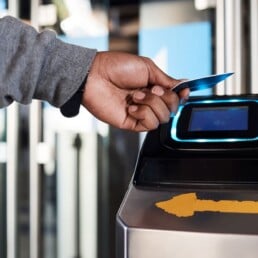Impact of the Pandemic
As the world adjusts to the post-pandemic environment, the nature of customer attrition is changing. The pandemic has shortened the attrition cycle, altered the underlying causes, and changed the profile of customers who call in to cancel their service. For these reasons, customer attrition is more difficult to predict through business intuition alone. In the last few months since the onset of the pandemic, a few trends are apparent:
1. The New Drivers of Attrition
As the factors that influence attrition are changing, at-risk customers are harder to identify through traditional business intuition. For example, sharp drops in customer engagement or purchasing habits, which previously may have indicated that a customer has soft-migrated to another provider, are more likely to signal temporary or permanent business shutdown. Where traditional business intuition may now falter, companies can improve their understanding of the customer’s situation by improving their pandemic-related monitoring and by adapting they way they predict at-risk customers.
Pandemic Monitoring
As the drivers of attrition are changing, understanding can be improved by paying close attention to the specific ways in which COVID impacts business viability, purchasing behavior, and switching behavior.
Examples of monitoring practices may include:
a) Tracking geo-specific indicators, including local economic benchmarks (unemployment, business closures, etc.) and local policy changes
b) Splitting monitoring along factors such as industry, debt load, ownership structure, etc. which may impact customer behaviors in new ways in a pandemic. For example, given travel is heavily impacted by the pandemic, behavior of customers in capital intensive travel-related sub-industries may change more dramatically than that of customers in other industries.
“Pandemic-specific monitoring should be added to companies’ existing reporting, as the impact of COVID is likely to remain evident in the long term”
Modernized Prediction
Market conditions continue to change rapidly, and it is unlikely that we are yet able to identify and understand every factor driving attrition in the new environment. Most firms use traditional analytics tools to predict risk through a set combination of factors that may not be as predictive anymore. Thus, these techniques now need to be further modernized :
a) Introducing alternative data sources as proxies for business activities by region (Unemployment claims data, Google’s mobility reports, OpenTable reservation data etc.)
b) Leveraging open-source algorithms for AI/ML which are continuously optimized for performance and have proven success across industries.
2. Acceleration of attrition
The conditions resulting from COVID, including but not limited to public response, consumer behavior, local restrictions, and economic factors, are changing at an unprecedented pace. The way in which businesses and customers respond to these conditions varies. Thus, the ability of service providers to remain viable in the current environment will depend on how well they match their retention efforts to the customer’s behavior and the underlying conditions. What works one month, both in predicting attrition and in preventing it, may not work for the next.
As a result, service providers also need to increase the frequency with which they refresh their retention strategy. The concept of applying feedback from prior retention efforts to improve the overall strategy is not new – however, in the current environment, the frequency of iteration is key. Successful programs will dynamically adjust their retention strategy to match the current pace of change, specifically:
a) Setting up a system of indicators that track COVID conditions and their impacts in the key markets of interest
b) Revisiting retention strategy frequently, on monthly basis if possible, to readjust based on the results of the monitoring
3. Customers that can – or should – be retained differ
Now more than ever, it is essential to distinguish between attrition that can be prevented or reversed through intervention, versus attrition that is driven by factors that are out of a service provider’s control. For providers operating in competitive markets, with increasingly low margins, it is particularly important to ensure that all retention investment is directed to customers that can be effectively retained.
As an example, many providers invest heavily in win-back campaigns, directed at customers who have recently experienced a sharp drop in engagement. Under normal conditions, these customers could be assumed to be testing out a competitor, making them a valuable prospect for a win-back campaign. Under COVID conditions, however, it is more likely that these customers are temporarily or permanently shut down due to local restrictions or economic hardship. A win-back campaign directed at those customers would likely result in low ROI. Distinguishing between these two types of customers, who may look identical if relying on engagement alone, is crucial for maintaining overall effectiveness of retention investment.
Indicators other than a drop in engagement that can help determine the viability of a given customer in COVID include:
a) Debt load – high debt load can indicate lower viability due to increased uncertainty and reliance on available capital
b) Local COVID indicators – such as local case volume, local policy and regulation on businesses, claims of unemployment, etc. can help distinguish between customer migration and business closure.
“The cost of attempting to retain a customer that cannot be saved can be similar or higher to that of acquiring a new one, therefore a viability assessment prior to outreach is crucial”
Where Most Retention Programs Go Wrong
Despite the fact that customer retention is crucial to the growth of business, many B2B providers struggle with customer retention. Pre-pandemic, the root cause was generally twofold:
1.Reactive, rather than proactive efforts
Ineffective retention programs most often fail because they intervene too late in the attrition cycle. When providers attempt to save customers after they have decided to leave, they are placed in “win-back mode,” where it is much harder to improve customer satisfaction enough to retain the customer. At this point in the attrition cycle, retention teams have limited tools, and the resulting cost of retention is high – even close to the cost of acquiring a new customer. With shorter attrition cycles, and larger barriers to mitigating late-stage attrition risk, programs that address attrition only at point of cancellation will disproportionately struggle with attrition.
2. One-off, rather than holistic
Most providers fail to establish holistic retention programs. Instead, the focus is often placed on individual retention initiatives which, implemented improperly or without holistic program support, are often unsuccessful. In successful programs, each initiative is part of a wider, complementary set of retention strategies designed to provide full coverage across all drivers of attrition. COVID-19 adds a third crucial component:
3. Static, rather than dynamic
The key drivers of attrition in a pandemic differ dramatically from those under normal business conditions – and both attrition behavior, and the conditions that drive it, continue to evolve rapidly. Most attrition programs do not re-evaluate and adjust their retention programs often enough to keep up with the changes under normal conditions – let alone during the rapid change brought by major disruption.
Programs that do not have a comprehensive set of retention tools available, and those that are unable to enact proactive and preventative measures, will be poorly equipped to handle pandemic-era attrition. Programs that are not able to rapidly deploy, and adjust, retention tools based on new information, will be even more impacted.
Exhibit 1. Attrition Triage Framework
The New Mantra
Any retention program must address the three pitfalls detailed above in order to be successful in the current environment. Key components of an effective retention program are:
1.Early Intervention
When attrition risk is identified earlier, providers can make small adjustments to improve the customer experience. These adjustments are often easier and less expensive to deploy, resulting in a better return on retention investment. Retention efforts at this stage can be proactive, resolving point issues before the customer complains or cancels, and preventative, resolving larger customer experience concerns before they put individual relationships at risk.
2. Lifecycle Management
Even when the risk of attrition is identified early, no single intervention is sufficient by itself. At-risk customers not caught by early actions will continue deteriorate and require additional, more intensive management later on. Effective retention programs therefore enact “safeguards” at each step in the attrition lifecycle, to maximize overall revenue retention. Exhibit 1 provides an illustrative depiction of such a lifecycle management approach:
“Holistic lifecycle management includes preventative, proactive, reactive and last call strategies, with focus on the company-specific areas that need more improvement”
Exhibit 2. Attrition Triage Framework
3.Dynamic Response to Changing Conditions
Effective programs match their retention efforts to the specific drivers of attrition. In the current environment, with rapid changes in each target market’s COVID impact, dynamic deployment and adjustment of retention strategies is crucial to success.
Developing Quick- Cycle Programs
As COVID is rapidly changing the factors that influence attrition and the customer profiles that are at risk, retention programs should not only be proactive and holistic, but also quick to deploy. Below are the main steps for setting up a quick-cycle program:
1.Know your source of attrition risk:
Measure the severity and sources of attrition impacting your customer portfolio and establish benchmarks to track your performance. Incorporating COVID-specific monitoring can provide a competitive advantage in the current market.
2. Anticipate early which customers are at risk:
Invest in predictive analytics tools and resources to identify the customer segments at-risk based on attrition sources in the portfolio. Leverage technology to automate this process for faster iteration and better results.
3. Strategically deploy retention initiatives:
Plan strategic initiatives for each identified source of attrition that can be quickly deployed at each stage in the attrition cycle for full coverage.
4. Apply test and learn framework:
Monitor the effectiveness of each initiative, based on retention improvement for the target customer population. Optimize program for quick feedback loops and shuffling resources to maximize revenue retention from the initiative expenditure.
Exhibit 3. Agile Retention Approach
The Right Stuff
Given the far-reaching impact of the pandemic, companies should adapt their retention strategies to specifically address the COVID-related needs of their customer base. Impactful retention efforts require significant investment, and it is therefore even more important to identify risk accurately and focus efforts precisely:
1.Preventive
a) Event-based Outreach:
Targeted outreach for customers that will be affected by certain events that could potentially put them at risk. Such events could be expected changes in pricing, transitioning to new management, or external events such as economic instability and natural disasters. When it is known that certain events can surprise customers and potentially affect the relationship, it is important to intervene early and build trust.
b) Service-based Strategies:
Strategies related to improving the service experience and ensuring customers receive the help they need related to the product they are paying for. A great service experience not only improves retention but also brings new customers through referrals and word of mouth.
c) Product Enhancements:
Ensuring that products are continuously improving is a key to maintaining healthy customer relationships, especially in today’s environment.
2. Proactive
a) Predictive analytics:
As the world is navigating the uncertainty brought by COVID, predictive analytics tools such as machine learning attrition models can leverage historical and current data to identify patterns, indiscernible by business intuition alone, and predict which customers are at risk to inform outreach campaigns.
3. Reactive
a) Trigger-based Outreach:
Targeted outreach to customers that have indicated dissatisfaction with the product or service. Such indicators can be reduction in product engagement, large number of inbound service calls, or large intervals of inactivity. When these indicators are identified early, there is an opportunity to intervene, check the health of the customer relationship, and mitigate any risk of attrition.
4. Last Call
a) Inbound Retention:
Strategies that aim to save the relationship when the customer calls to cancel. At this last stage of the attrition cycle, retaining a customer can be as difficult and expensive as gaining a new one, so the retention teams that handle it should be skilled and equipped with the appropriate tools and offers.
Exhibit 4. Retention Strategies
In Closing...
Following the pandemic, retention is more important than ever as the market has become increasingly competitive with competitors providing attractive deals and undercutting margins to aggressively gain new customers.
However, many customer retention programs are currently ineffective and expensive because they are too reactive, one-off efforts, and not adjusted to changing attrition environment.
Successful retention programs course-correct early and enact as safeguards at all points in the attrition lifecycle. The speed at which these programs can be deployed and adjusted based on external factors and gained experience will be key in the current environment. Specific retention strategies will depend on the risk a company is facing.
Companies should adjust retention strategies to effectively address the impact of the pandemic, by partnering with customers and helping them navigate through uncertainty. Efforts that focus on deepening the customer relationship, albeit while foregoing profits temporarily, can grow the relationship and build loyalty in the long term.
__________________________________________________________________________________________________________
































